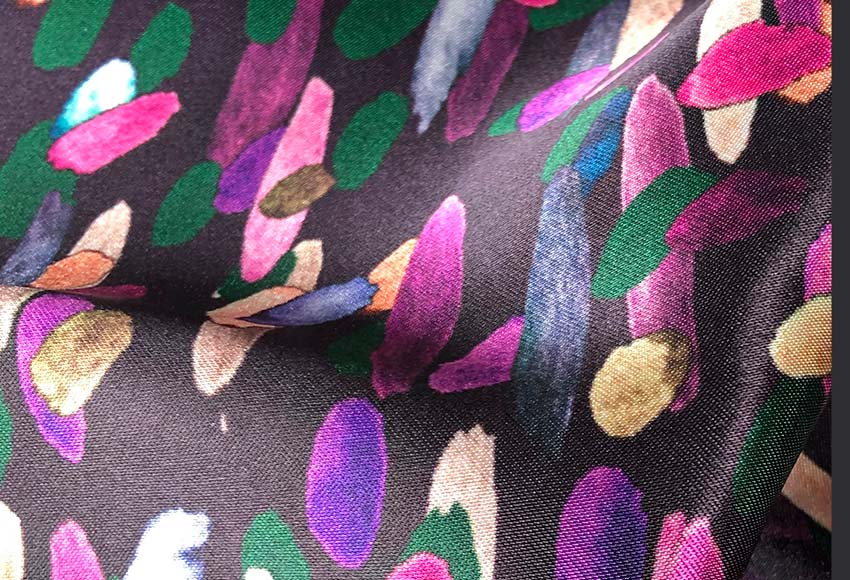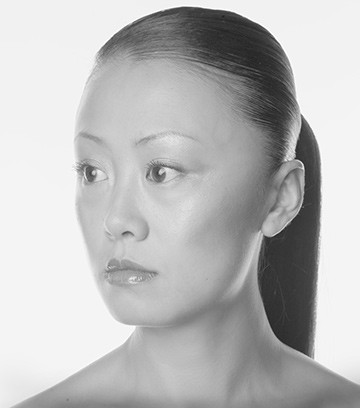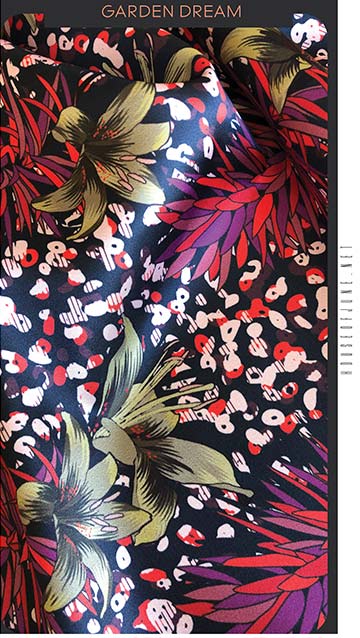The Vibrant Fabric of Converse

By John Jeter
Li Dan and Lady Gaga share a similar belief: “I think fashion and music go hand-in-hand,” the piano-playing megastar once told an interviewer, “and they always should.” Since opening her own New York fashion studio, Li has become a star in her own right.
“The whole idea of performance is you prepare, and then you perform,” says Li, who was among the first — if not the first — student directly from China when she attended Converse College nearly two dozen years ago to study piano.
Dr. Doug Weeks, Converse’s beloved, and recently retired, piano professor, remembers Lily, which she called herself then, as a brilliant classical musician. “She was a great pianist,” he says. “She could have gone on to do great things with piano, but she always had an interest in fashion, a passion.”
“We never know when we are young how our life is going to lead, which direction, but how we start everything has a huge impact.”
After Converse, Li went on to help design clothing lines for J.Lo. and Ellen DeGeneres, before opening her House of June in 2017. Her pantheon of customers includes the likes of Calvin Klein, Vera Wang, Ralph Lauren and Michael Kors, among many. She credits her success to Converse, which she attended in 1995.
“Converse is the beginning of everything,” she says from her home in stylish Crown Heights, Brooklyn, which she shares with her Bulgarian husband, Vel Iordanov; they met in 2000 at Manhattan’s Fashion Institute of Technology.
“We never know when we are young how our life is going to lead, which direction,” she says. “But how we start everything has a huge impact.”
She recalls her first public performance at the Petrie School of Music. “We were welcomed,” she says. “It wasn’t like I went to college and just disappeared in this pool of new students.”
 Artist Li DanShe speaks with vivid fondness of Converse, which she selected when she was a 17-year-old high school student in Chengdu, the sprawling capital of Sichuan province in southwestern China. She knew she wanted to come to America, but why Converse? “I just somehow gravitated towards something special,” she says, adding that China in the 1990s had no all-women’s colleges. “I wanted something nobody was talking about.”
Artist Li DanShe speaks with vivid fondness of Converse, which she selected when she was a 17-year-old high school student in Chengdu, the sprawling capital of Sichuan province in southwestern China. She knew she wanted to come to America, but why Converse? “I just somehow gravitated towards something special,” she says, adding that China in the 1990s had no all-women’s colleges. “I wanted something nobody was talking about.”
After she landed at Greenville-Spartanburg Airport and, packing a limited English vocabulary, she recalls that as soon as her host family picked her up and she arrived on campus, she felt at home. “If at the time I didn’t feel safe, it would have opened a whole Pandora’s Box because I was so young,” she says. “It was very hard for me to communicate, and I love to communicate. I have a lot of things I want to share, I want to express.”
She expresses her admiration for Converse this way: “I felt welcomed, paid attention to, and that was particularly important for a young adult like myself, who jumped into a world with a drastically different culture, value system and way of life,” she says.
“Carve a path that is unique, that will set us apart from the others.”
Soon, she entered the fashion industry, producing prints of myriad vibrant colors in all manner of swirling and geometric designs.
She doesn’t design clothing but creates “expressive print-pattern artworks” that can be applied to any fabric, she says. She takes her inspiration from everywhere: vintage textiles, modern art, street art and “everyday urban surroundings.” Li finds it ironic that she attended college in a region so rich in textile history.
Peter McLaughlin, a New York fashion consultant, worked with Li for a couple of years beginning in 2010 on J.Lo.’s clothing line—“inspired by whatever was in Jennifer’s closet, so Li really had to make magic,” he says. While he describes Li as a meticulous designer with “an amazing eye for color,” he says she would talk about her piano-playing college days.
 “She went in a different direction, but then, to me, that totally made sense because the discipline of learning an instrument really fit into the discipline of what she did and her ambition—to be as good as possible every time,” he says.
“She went in a different direction, but then, to me, that totally made sense because the discipline of learning an instrument really fit into the discipline of what she did and her ambition—to be as good as possible every time,” he says.
Li’s work has a Zen-like feel, he says, which she combines with her Chinese ethic; he often had to persuade her to stop for the day at around 10:30 p.m.
“She has a very spiritual way of approaching her work,” he says, “and she has very high standards for herself. It’s not about whether it will be bought or liked or whatever, it’s more about whether she has done the best she can so that she can walk away and with her head held high.”
The same philosophy colors Converse’s fabric, she says. “I think as a young woman today, if you have something to say, something to express or even just have this tinkling urge and want to do something different, this is the best time to just try, and train your intuition,” she says.
Sharpening and nourishing our innate intuition increases our attention to our surroundings, which then helps us make good decisions, she says, and those, in turn, “carve a path that is unique, that will set us apart from the others.”
With its inclusiveness and a campus that looks “like a fairytale,” Converse offers that ideal easel, she says.
“I wish each one of the Converse students will take time to understand herself and figure out what really speaks to her spiritually, professionally and personally,” the globally branded fashion maven says, while also adding some extra advice:
Young people should eschew a “digitally driven life” to make themselves distinctive. “That difference, at the end of the day,” she says, “makes you have something to say to the outside world.”
She sums up how Converse continues to inspire her confidence: “I always reflect on my life at Converse. Without this experience, the road to true self-actualization would have been quite different.”